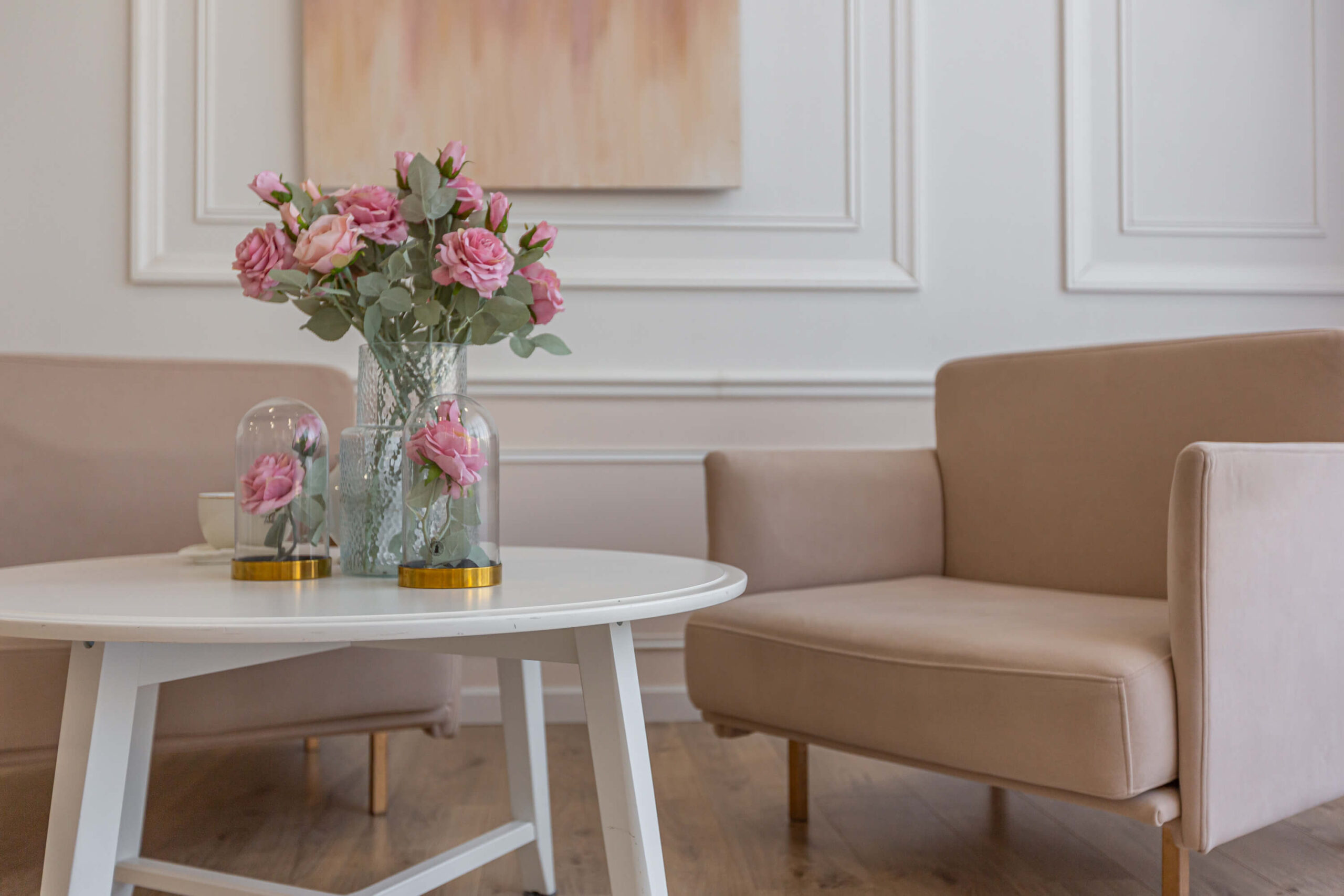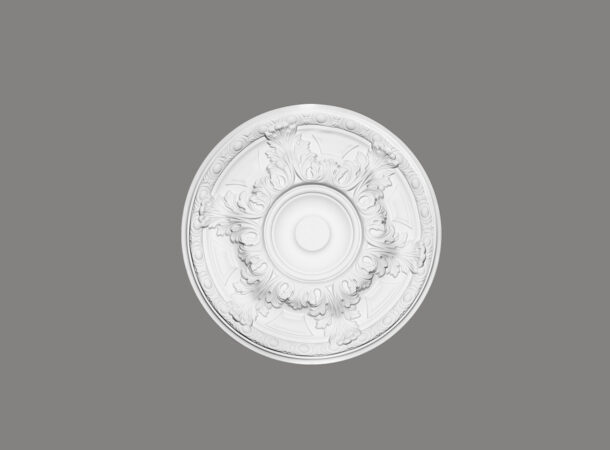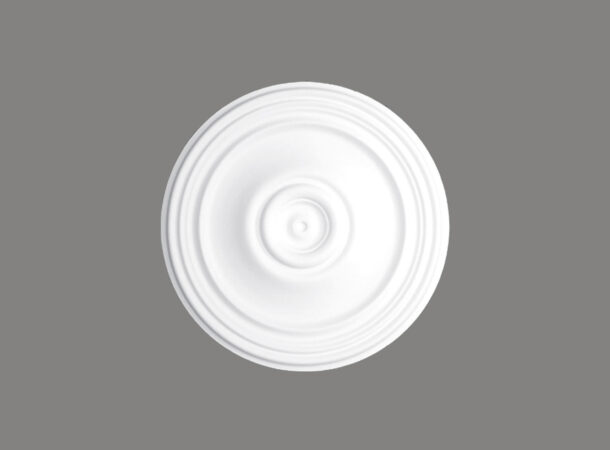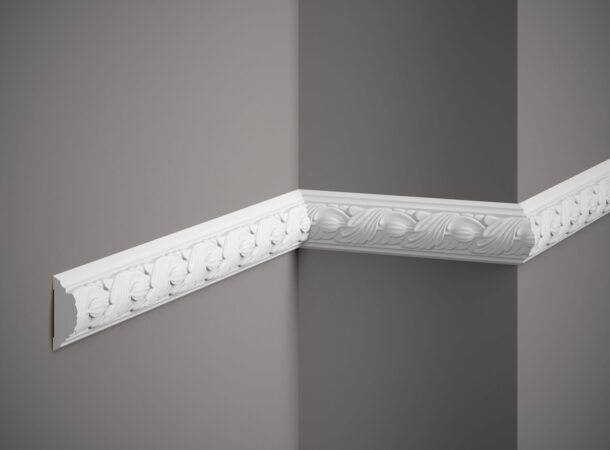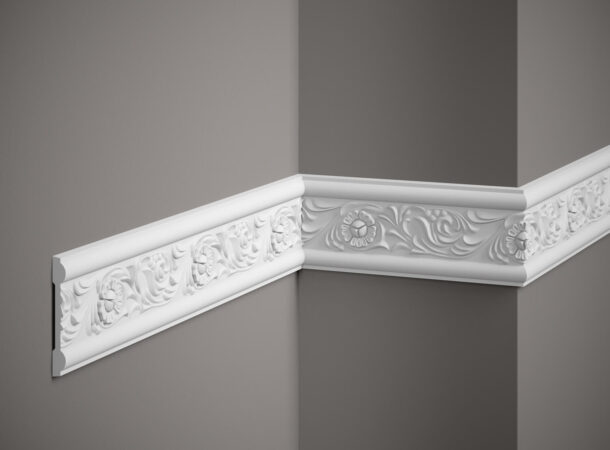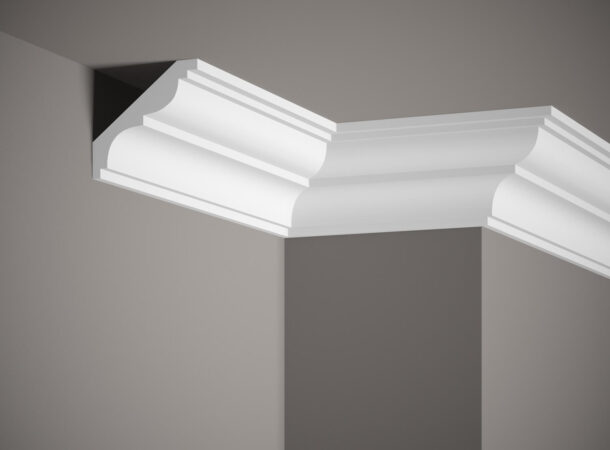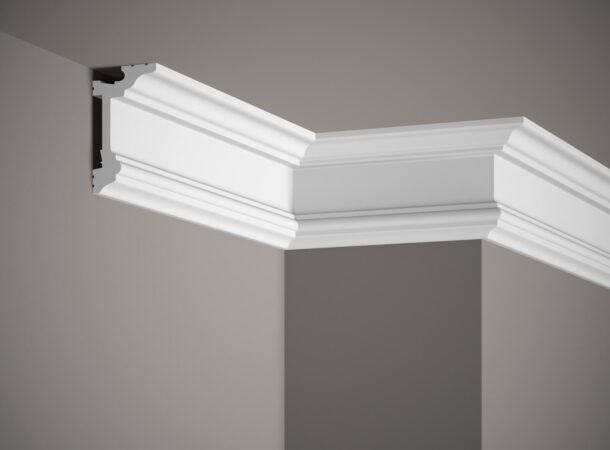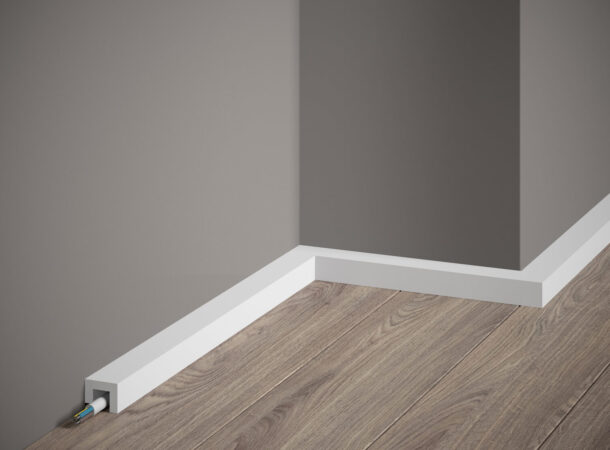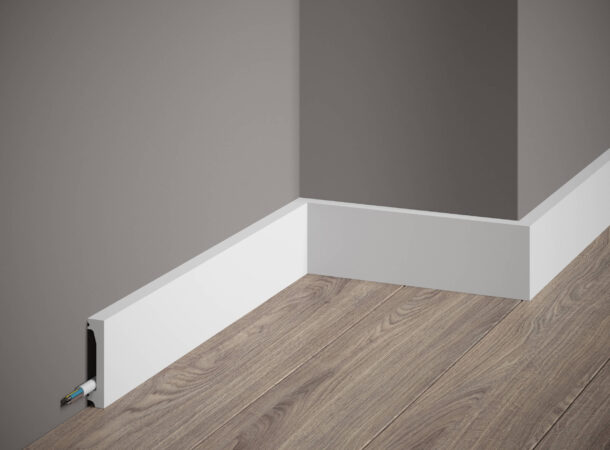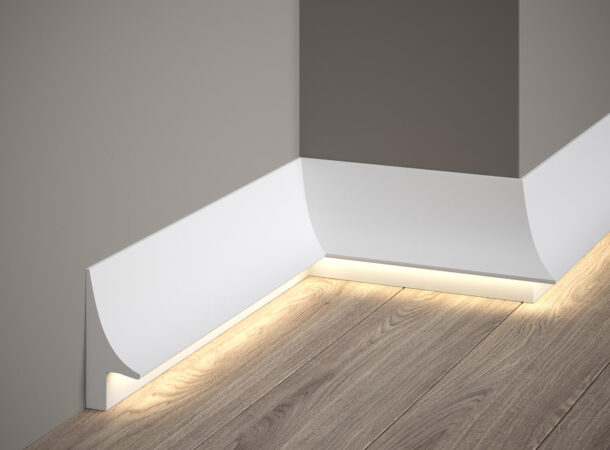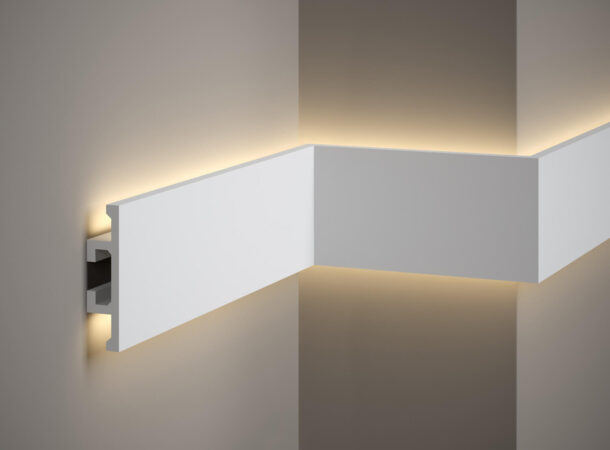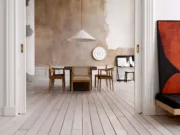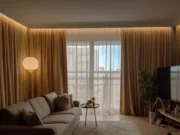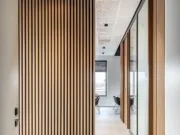Interior stucco: Back to the roots
Interior stucco, although today often associated with baroque ballrooms or richly decorated Rococo interiors, has its roots in antiquity. It was used to emphasize the majesty and beauty of the most important buildings, which makes it one of the most classic decorative elements in the history of architecture. Although it may seem that stucco is a relic of the past, it still finds its place in modern spaces.
How is it that these seemingly outdated decorative elements are still present in our homes despite the passage of time? Internal stucco has stood the test of time, adapting to modern trends and technologies, which has enabled it to be used in contemporary interior design. Currently, the designer’s approach to stucco allows you to create unique, personalized spaces that combine historical elegance with modern minimalism. This means that stucco is far from being obsolete, becoming a timeless combination of function and form that still finds its place in modern residential and commercial spaces.
Interior stucco – why the return to interest in this element of decoration?
Renewed interest in stucco may result from naturally recurring motifs and fashions from previous years. Contemporary trends in interior design often draw from the past, adapting and interpreting classic motifs anew. Stucco with a wealth of forms and decorations is a perfect combination of modernity and traditional beauty, introducing elements of luxury and sophistication into modern spaces.
Another factor is the popularization of modern classic in contemporary interior design. It is a style that combines classic architectural elements with modern solutions, which makes the use of stucco to emphasize the interior atmosphere a natural choice. Thanks to it, the interiors gain elegance and sophistication, which is an indispensable element of this style.
Modern stucco has also gained popularity in the social media environment. It is stylish, elegant and looks great in any space, which makes it a perfect background – both for photos and recordings. Being present on websites such as Instagram, YouTube, TikTok and Twitch means that stucco is not only a decorative element, but also becomes a marketing tool that adds character to spaces and makes them “Instagrammable”, which only increases its popularity. among younger generations and interior designers.
Elements of internal stucco in interior design – from antiquity to modern times
Changes in interior stucco reflect the evolution of tastes, technologies and social expectations regarding residential and public interiors. Each era brought something new, changing the function and appearance of stucco over the centuries.
Antique
- Elements: Cornices (now ceiling moldings), columns – friezes and capitals.
- Decoration motifs: Acanthus, volutes, bay leaves.
- Materials: Stone, marble.
In ancient times, both in Greece and Rome, stucco elements made of stone and marble were not only decorations, but also a symbol of majesty. Patterns such as acanthus, volutes or bay leaves, often three-dimensional and massive, emphasized the passion for monumentalism. These elements were large, visible, with clear, three-dimensional decorations. At that time, stucco was mainly used to decorate temples and important public buildings. Elements such as columns and capitals were richly decorated, often with floral and geometric motifs.
Middle Ages
- Elements: Ceiling beams, brackets.
- Decoration motifs: Religious motifs, geometric patterns.
- Materials: Wood, stone.
In the Middle Ages, sacred architecture dominated, so when stucco appeared, it was often of a religious nature. Decorative columns replaced ceiling beams and brackets used to strengthen structures in churches and cathedrals, with an emphasis on austerity and functionality of form.
Renaissance
- Elements: All types of ceiling stucco such as rosettes, medallions, ceiling coffers.
- Decoration motifs: Plant motifs, portraits, mythological scenes.
- Materials: Plaster, stucco.
The revival of interest in the art and culture of antiquity, decorations became more refined and diverse. The Renaissance brought a revival of classical forms and proportions, with a strong emphasis on symmetry and harmony. Stucco became more complex and ornate, often with mythological inspirations.
Baroque and Rococo
- Elements: Richly decorated wall stucco, ceiling moldings, cornices.
- Decoration motifs: Rocaille (shells), curly lines, abundant plant ornaments.
- Materials: Stucco, gold, plaster.
Baroque and Rococo went down in history as an era of splendor, where stucco was dominated by dynamic rocaille, curly lines and abundant floral ornaments, often gilded, which aroused surprise and admiration. Very rich and dynamic decorations were intended to delight and surprise, giving the interiors splendor and drama. Baroque and Rococo were eras of splendor and extravagance.
Neoclassicism
- Elements: Pilasters, cornices, columns.
- Decoration motifs: Greece and Rome, simple geometric patterns.
- Materials: Plaster, marble.
A return to simpler forms and harmony, inspired by antiquity. Neoclassicism returned to the more austere, symmetrical forms of antiquity, with less emphasis on decorativeness compared to Baroque and Rococo.
Victorian era (English style)
- Elements: Rosettes, skirting boards and ceiling strips, wall strips, wall panels.
- Decoration motifs: Flowers, leaves, fruit.
- Materials: Plaster, wood.
The Victorian era, also known as the English style, continued the tradition of rich decoration, using plaster and wood to create rosettes, baseboards and ceiling moldings, and wall panels with motifs of flowers, leaves and fruit. It is characterized by quite heavy and complex decorations, often painted in bright colors.
Modernism (20th century)
- Elements: Minimalist moldings (interior Styrofoam moldings, second half of the 20th century).
- Decoration motifs: No or very subtle decorations.
- Materials: Concrete, plastic, modern composites.
The modernism of the 20th century revolutionized the approach to stucco, limiting decorations to a minimum and introducing new materials such as concrete, plastic, polystyrene strips and modern composites, which resulted in minimalist strips and the lack of traditional ornaments, where functionalism and form followed function. Absolute minimalism in decorations.
Modern times
- Elements: Moldings, wall panels, lighting moldings, slats.
- Decoration motifs: Minimalist or nature-inspired.
- Materials: Polyurethane, PVC, modern plasters.
Adaptation to modern interiors, functionality combined with aesthetics, technologically advanced materials enabling easy installation and maintenance. Contemporary interiors often give up excessive decorations in favor of clean lines and forms. Stucco is used more to discreetly emphasize the geometry of the space than as the main decorative element.
Interior stucco today – how do modern technologies change traditional design?
Nowadays, interior stucco uses a variety of materials to meet both the aesthetic and functional needs of contemporary interior design. Traditional materials such as wood, plaster or Styrofoam have their strengths and weaknesses. Wood, valued for its durability and the warmth of its natural appearance, can be susceptible to moisture and pests. Gypsum, on the other hand, offers a smooth texture and ease of shaping, but is brittle and heavy. Styrofoam decorative strips are a material that allows you to create rich, precise decorations. However, Styrofoam stucco, although light and easy to install, is less durable and easy to damage. In response to these challenges, modern solutions such as polymers replace traditional materials, offering strength, lightness and resistance to external factors.
Mardom Decor uses high-density extruded duropolymer in its production. Thanks to ScratchShield® technology, stucco is resistant to impacts and kicks, making it an ideal solution for intensively used spaces. The proprietary PolyForce material is resistant to water and UV radiation, which allows it to be installed in any room, from the kitchen to the bathroom. Additionally, stucco strips are compatible with modern LED lighting systems thanks to LightGuard® technology, which allows you to create unique lighting arrangements. All Mardom Decor stucco elements can also be painted, which gives interior designers even greater freedom in adapting the appearance to the individual needs and preferences of customers.
How to introduce stucco elements into contemporary interiors?
Contemporary interiors, especially those in a minimalist style, often prefer simple forms and a limited number of decorations. Styles such as Japandi, soft loft and Scandinavian are characterized by the motto “the less, the better”. In such spaces, internal stucco can take the form of subtle strips that should be painted with any color of wall paint to harmonize with the rest of the interior (the strips should be painted with water-based paint). These elements do not dominate the space, but discreetly emphasize its character, adding elegance without excess decorations. Internal stucco is treated here as a functional element – securing expansion joints in the floor, masking a curtain rod or an element introducing additional lighting into the interior.
Although the dominant trend is minimalism, there is also no shortage of interiors that celebrate the richness of forms and splendor. Designers are still eager to use stucco to add unique character and style to interiors, using its potential to create luxurious and elegant spaces. Contemporary design does not shy away from the classics, transforming and adapting them to modern needs and trends.
French style stucco – elegance and rococo splendor in a contemporary version
French-style stucco brings the elegance and classic beauty of ancient interior architecture to contemporary interiors. Rich decorations and sumptuous forms are characteristic of this style. In this style, you can create both elegant frames and entire wall arrangements using stucco. Decorative frames often end with decorative corners, adding a refined character to the interior (it is worth remembering to use an appropriate glue, e.g. to install the joints of NMC stucco elements, it is necessary to use a dedicated glue). Stucco is usually available in white and black colors or in monochromatic shades, perfectly matching the rest of the interior and emphasizing its luxurious character.
Stucco in the English style – subtle elegance and functionality
In the English style, stucco combines subtlety with functionality. The decorated moldings are elegant, but not overly rich, which corresponds to the classic approach to English interior decoration. Decorative wall screens consist of expressive, thick and easily visible strips, which are often finished with decorative corners. The color palette includes subdued white, deep shades of navy blue and dark green, which further enriches the arrangement.
Interior stucco in modern classic interior decoration
In the modern classic style, the interior stucco is characterized by subtle, but at the same time elegant and classic decorations. Decorative frames are usually single, made of thin strips and usually ended at a 45-degree angle (the ends of the strips should be cut at a 45-degree angle and connected to each other). The colors of the stucco, such as beige or gray, are carefully matched to the shade of the walls, which allows for harmonious integration with the rest of the interior, emphasizing its modern and minimalist character.

